Neptune Technology Group L900M2 900 MHz water meter transmitter. User Manual IM L900 MIU
Neptune Technology Group Inc. 900 MHz water meter transmitter. IM L900 MIU
Contents
- 1. User Manual Part A
- 2. User Manual Part B
- 3. User Manual_Part I
- 4. User Manual_Part II
User Manual Part A
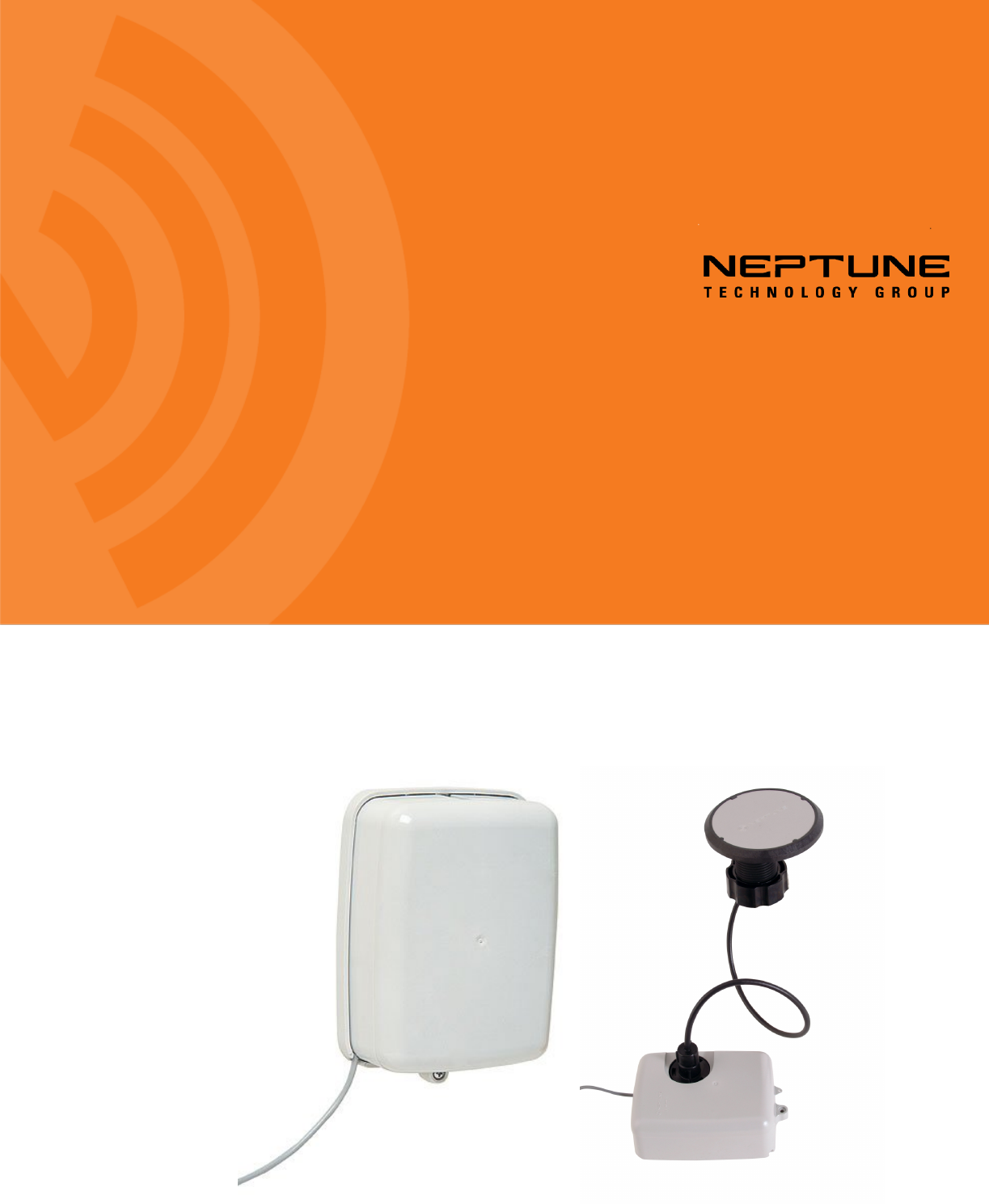
L900™ MIU Pit and Wall Installation and Maintenance Guide
L900™ MIU Pit and Wall
Installation and Maintenance Guide
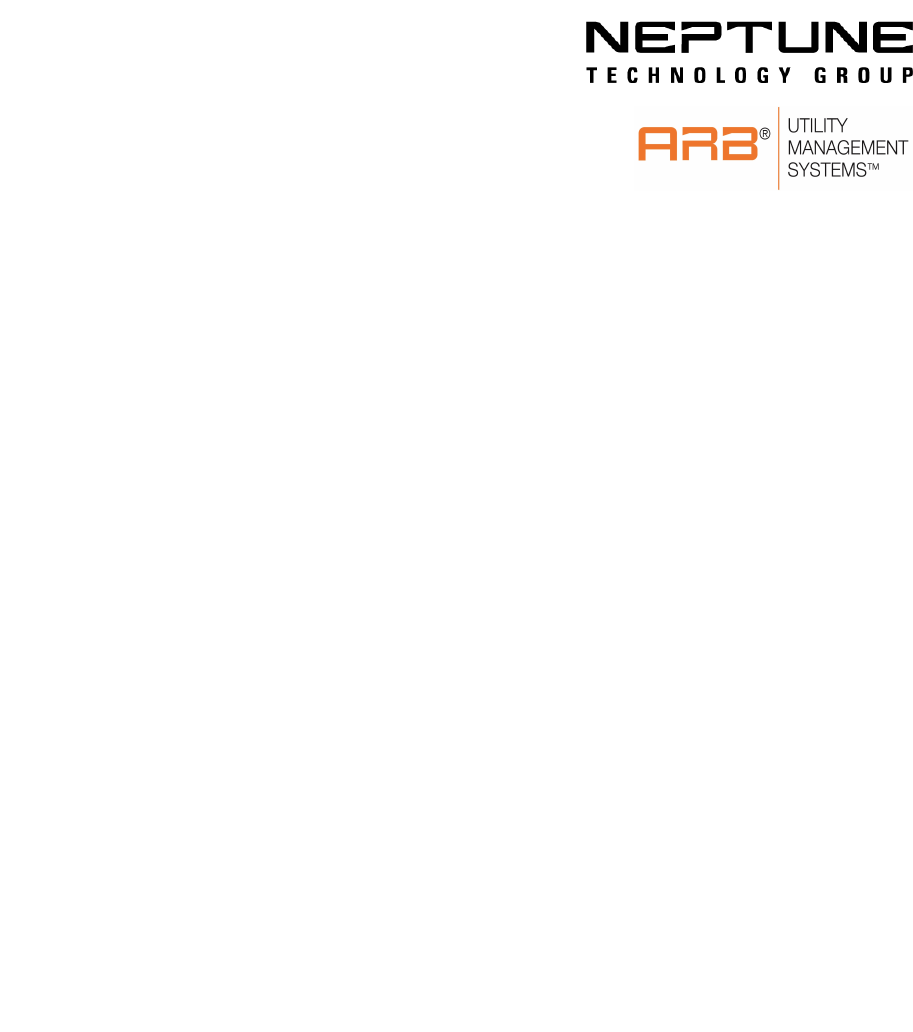
L900™ MIU Pit and Wall
Installation and Maintenance Guide
Copyright
This manual is an unpublished work and contains the trade secrets and
confidential information of Neptune Technology Group Inc., which are not to be
divulged to third parties and may not be reproduced or transmitted in whole or
part, in any form or by any means, electronic or mechanical for any purpose,
without the express written permission of Neptune Technology Group Inc. All
rights to design or inventions disclosed herein, including the right to manufacture,
are reserved to Neptune Technology Group Inc.
The information contained in this document is subject to change without notice.
Neptune reserves the right to change the product specifications at any time
without incurring any obligations.
Trademarks used in this manual
L900 and ProRead are trademarks of Neptune Technology Group Inc.
ARB, E-CODER, MACH 10, and R900 are registered trademarks of
Neptune Technology Group Inc. Other brands or product names are
trademarks or registered trademarks of their respective holders.
FCCNotice
This device complies with Part 15 of the FCC Rules. Operation is subject to the
following two conditions: (1) this device may not cause harmful interference, and
(2) this device must accept any interference received, including interference that
may cause undesired operation.
Note: This equipment has been tested and found to comply with the limits for a
Class B digital device, pursuant to Part 15 of the FCCRules. These limits are
designed to provide reasonable protection against harmful interference in a
residential installation. This equipment generates, uses, and can radiate radio
frequency energy and if not installed and used in accordance with the instruction,
may cause harmful interference to radio communications. However, there is no
guarantee that interference will not occur in a particular installation. If this
equipment does not cause harmful interference to radio or television reception,
which can be determined by turning the equipment off and on, the user is
encouraged to try to correct the interference by one or more of the following
measures.
lReorient or relocate the receiving antenna.
lIncrease the separation between the equipment and receiver.
lConnect the equipment into an outlet on a circuit different from that to which
the receiver is connected.
lConsult the dealer or an experienced radio/TV technician for help.
RF Exposure Information
This equipment complies with the FCC RF radiation requirements for
uncontrolled environments. To maintain compliance with these requirements, the
antenna and any radiating elements should be installed to ensure that a
minimum separation distance of 20cm is maintained from the general population.

Changes or modifications not expressly approved by the party
responsible for compliance could void the user's authority to
operate the equipment.
Professional Installation
In accordance with section 15.203 of the FCC rules and regulations, the L900
MIU must be professionally installed by trained utility meter installers.
Industry Canada (IC) Statements:
Section 8.4 of RSS-GEN
This Device complies with Industry Canada License-exempt RSS standard(s).
Operation is subject to the following two conditions: 1) this device may not cause
interference, and 2) this device must accept any interference, including
interference that may cause undesired operation of the device.
.Cet appareil est conforme aux normes RSS exonérées de licence d'Industrie
Canada. L'opération est soumise aux deux conditions suivantes: 1) cet appareil
ne doit pas provoquer d'interférence, et 2) cet appareil doit accepter toute
interférence, y compris les interférences pouvant entraîner un fonctionnement
indésirable de l'appareil.
Section 8.3 of RSS-GEN
Under Industry Canada regulations, this radio transmitter may only operate using
an antenna of a type and maximum (or lesser) gain approved for the transmitter
by Industry Canada. To reduce potential radio interference to other users, the
antenna type and its gain should be so chosen that the equivalent isotropically
radiated power (e.i.r.p.) is not more than that necessary for successful
communication.
This radio transmitter IC: 4171B-L900M2 has been approved by Industry Canada
to operate with the antenna types listed below with the maximum permissible
gain and required antenna impedance for each antenna type indicated. Antenna
types not included in this list, having a gain greater than the maximum gain
indicated for that type, are strictly prohibited for use with this device.
lMaximum permissible gain of +1 dBi and required impedance of 75 ohm.
lApproved Antenna type(s).
oR900 Pit Antenna, part number 12527-XXX
oHigh Gain R900 Pit Antenna, part number 13586-XXX
oR900 Wall Antenna, part number 13717-000
En vertu de la réglementation d'Industrie Canada, cet émetteur radio ne peut
fonctionner qu'avec une antenne d'un type et un gain maximal (ou inférieur)
approuvé pour l'émetteur par Industrie Canada. Pour réduire les interférences
radio potentielles avec d'autres utilisateurs, le type d'antenne et son gain
devraient être choisis de manière à ce que la puissance rayonnée
isotropiquement équivalente (e.i.r.p.) ne soit pas supérieure à celle nécessaire à
une communication.
Cet Cet émetteur radio IC: 4171B-L900M2 a été approuvé par Industrie Canada
pour fonctionner avec les types d'antennes énumérés ci-dessous avec le gain
maximal admissible et l'impédance d'antenne requise pour chaque type
d'antenne indiqué. Les types d'antenne non inclus dans cette liste, ayant un gain
supérieur au gain maximal indiqué pour ce type, sont strictement interdits pour
être utilisés avec ce périphérique.
lGain maximal admissible de +1 dBi et impédance requise de 75 ohms.
lType.(s) d'antenne approuvé
oAntenne de puits R900, numéro de pièce 12527-XXX
oAntenne de puits à gain élevé R900, référence 13586-XXX
oAntenne murale R900, numéro d'article 13717-000
L900™ MIU Pit and Wall
Installation and Maintenance Guide
Literature No. IM L900 MIU 01.18
Part No. 13381-001
Neptune Technology Group Inc.
1600 Alabama Highway 229
Tallassee, AL 36078
Tel: (800) 633-8754
Fax: (334) 283-7293
Copyright © 2017-2018
Neptune Technology Group Inc.
All Rights Reserved

Contents
Chapter 1: Product Description 1
Product Description 2
L900 MIU Programming 2
RF Protocol Error Detection 2
RF Frequency Control Algorithm 2
RF Transmission Period and Randomness 2
Low Battery RF Emissions 2
Chapter 2: L900 Specifications 3
Electrical Specifications 3
Transmitter Specifications 3
Encoder Register Interface 3
Specifications - L900 MIU Pit 4
Environmental Conditions 4
Functional Conditions 4
Dimensions and Weight 4
Specifications - L900 MIU Wall 6
Environmental Conditions 6
Functional Specifications 6
Dimensions and Weight 6
Chapter 3: General Installation Guidelines 9
Tools and Materials 9
Safety and Preliminary Checks 10
Verifying/Preparing the Encoder Register 10
Installation of a Register (Non Pre-Wired or Potted Only) 11
Chapter 4: Wall Installation 15
Prior to Installation 15
Storage 15
Unpacking 15
L900 MIU Pit and Wall Installation and Maintenance Guide v

Tools and Materials 16
Site Selection 16
Installing the L900 MIU 17
Remove the Main Housing 17
Applying the Scotchloks 18
Magnet Swiping and Completing the Installation 20
Testing the Installation 20
Completing the Installation 21
Chapter 5: Pit Installation 23
Prior to Installation 23
Storage 23
Unpacking 23
Tools and Materials 24
Site Selection 24
L900 MIU Pit Installation 25
Installing the Antenna 26
Begin the Installation 27
Threading the F-Connector 28
Installing the Scotchloks 29
Connecting the Splice Tube 31
Tying the Cable and Magnet Swiping the L900 MIU 32
Testing the Installation 33
Chapter 6: Data Logging Extraction 35
About Data Logging 35
Accessing Data Logging 35
Initializing the Data Logger 37
Initiating RF-Activated Data Logging 40
Sample Data Logging Graphs 41
Off-Cycle Data Extraction 43
R900 Belt Clip Transceiver 44
vi L900 MIU Pit and Wall Installation and Maintenance Guide
Contents

L900 MIU Pit and Wall Installation and Maintenance Guide vii
Chapter 7: Maintenance and Troubleshooting 45
Six- and Four-Wheel Encoders 45
Six-Wheel Encoders Normal Operation 45
Four-Wheel Encoders Normal Operation 45
Troubleshooting 46
Replacement Parts 46
Chapter 8: Contact Information 47
By Phone 47
By Fax 47
By Email 47
Glossary 49
Index
Contents

This page intentionally left blank.
viii L900 MIU Pit and Wall Installation and Maintenance Guide
Contents

Figures
Figure 1 – L900 MIU - Wall 1
Figure 2 – L900 MIU - Pit 1
Figure 3 – L900 MIU - Pit Dimensions - Front 5
Figure 4 – L900 MIU Pit Dimensions - Side 5
Figure 5 – L900 MIU Pit Antenna 6
Figure 6 – L900 MIU Wall Dimensions - Front 7
Figure 7 – L900 MIU Wall Dimensions - Side 7
Figure 8 – Wiring a Neptune Encoder Register 12
Figure 9 – L900 MIU Color Code for Wires 12
Figure 10 – Cable Threaded Around Strain Relief Posts 13
Figure 11 – Application of the Sealant 13
Figure 12 – Covering the Terminal Screws 14
Figure 13 – L900 MIU Wall Kit 15
Figure 14 – L900 MIU Wall Main Housing 17
Figure 15 – Mounting Adapter 18
Figure 16 – Gel Cap Connections 18
Figure 17 – Color Code for Wires 19
Figure 18 – Adapter Cable 19
Figure 19 – Cable Exit Notch 19
Figure 20 – Securing Adapter 20
Figure 21 – Magnet Swipe the L900 MIU 20
Figure 22 – Install Seal Wire 21
Figure 23 – L900 MIU Kit 23
Figure 24 – Antenna Placement for Low Traffic Areas 24
Figure 25 – Antenna Placement for High Traffic Areas 25
Figure 26 – Inserting the Antenna into the Pit Lid 26
Figure 27 – Locking Nut on Antenna 26
Figure 28 – Securing the Locking Nut 26
Figure 29 – Installation Completed 27
Figure 30 – Black Thread Guard from Male F-Connector 27
L900 MIU Pit and Wall Installation and Maintenance Guide ix

Figure 31 – Seating Washer 27
Figure 32 – Apply Novaguard 28
Figure 33 – Tightening Connector 28
Figure 34 – Gasket and Connector 28
Figure 35 – Scotchloks Connector 29
Figure 36 – Color Code for Wires 29
Figure 37 – Seating Connector Wires 29
Figure 38 – URCrimping Tool 30
Figure 39 – Improper Connections 30
Figure 40 – Three Color Wires Connected 30
Figure 41 – Splice Tube 31
Figure 42 – Gray Wire in Slots 31
Figure 43 – Cover in Place 31
Figure 44 – L900 MIU Attached to Antenna 32
Figure 45 – Magnet Swipe the L900 MIU 32
Figure 46 – HHU Home Screen 35
Figure 47 – N_SIGHTMain Screen 36
Figure 48 – Data Logger Options 36
Figure 49 – Reader ID Input 37
Figure 50 – HHU Time Confirmation 37
Figure 51 – Initialize RF Device 38
Figure 52 – L900 MIU ID Entry 38
Figure 53 – Capture Button 39
Figure 54 – Meter Size Selection 39
Figure 55 – Start Button 40
Figure 56 – Listening for Data 40
Figure 57 – Receiving Data 41
Figure 58 – Graph Button 41
Figure 59 – Examples of Data Logging Graphs 42
Figure 60 – HHU Home Screen 43
Figure 61 – HHU Menu Screen 43
Figure 62 – Off-Cycle Option 44
xL900 MIU Pit and Wall Installation and Maintenance Guide
Figures

Tables
Table 1 – Supported Encoder Maximum Cable Length 4
Table 2 – L900 MIU Pit Environmental Conditions 4
Table 3 – L900 MIU Pit Functional Specification 4
Table 4 – L900 MIU Pit Functional Specification 4
Table 5 – L900 MIU Wall Environmental Conditions 6
Table 6 – L900 MIU Wall Functional Specifications 6
Table 7 – L900 MIU Wall Dimensions and Weight 6
Table 8 – Recommended Tools 9
Table 9 – Recommended Materials 10
Table 10 – Maximum Cable Lengths 17
Table 11 – Cable Length and Manufacturer 25
Table 12 – Data Logging Graph Legend 42
Table 13 – Examples of Reading Values 46
Table 14 – Available Replacement Parts 46
L900 MIU Pit and Wall Installation and Maintenance Guide xi

This page intentionally left blank.
xii L900 MIU Pit and Wall Installation and Maintenance Guide
Tables
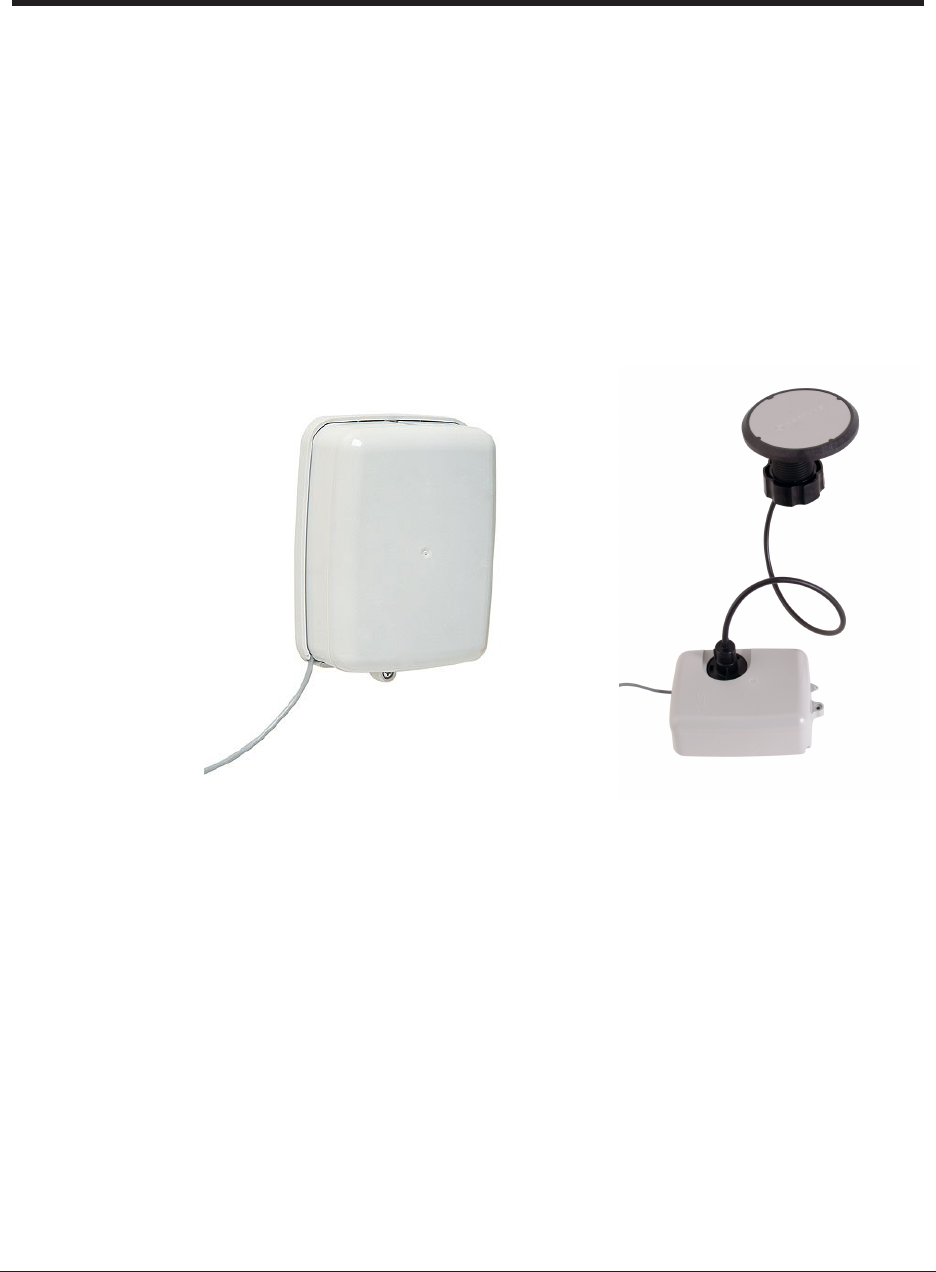
L900 MIU Pit and Wall Installation and Maintenance Guide 1
Chapter 1: Product Description
This chapter provides a general description of the L900™ meter interface unit
(subsequently referred to as L900 MIU).
The L900 MIU by Neptune is a compact electronic device that collects meter
reading data from an encoder register. It then transmits the data for collection by
the meter reader. A walk-by handheld unit (HHU), mobile unit, R900®Gateway
collector, or LoRa®(Long Range) collector receives the data and stores it to be
downloaded into the utility billing system for processing.
The L900 MIU is easily installed and operates within a radio frequency (RF)
bandwidth which does not require an operating license. Because the L900 MIU can
be mounted as far as 500 feet from the encoder register, optimum broadcast signal
strength is obtainable, ensuring a high percentage of accurate, one-pass readings.
Figure 1 – L900 MIU - Wall Figure 2 – L900 MIU - Pit
The L900 MIU meets FCC regulations Part 15.247, allowing higher output power
and greater range. The L900 MIU uses frequency-hopping, spread-spectrum
technology to avoid RF interference and enhanced security. The L900 MIU reads
the encoder registers at 15-minute intervals and transmits a mobile message that
includes the meter reading data and the unique nine-digit L900 MIU ID every 20
seconds. This allows the meter to be read by an HHU or mobile data collection
unit. The L900 MIU also transmits a high power fixed network message every
seven and one-half minutes on an interleaved basis to an R900 Gateway.
In addition to the mobile message that is transmitted every 20 seconds and the
fixed network message that is transmitted every seven and one-half minutes, the
L900 MIU is capable of supporting fixed network using a LoRa network.

The fixed network message that transmits for use on a LoRa network is sent every
three hours.
The L900 MIU is designed to offer advantages to utility organizations of all sizes:
lIncreases meter reading accuracy.
lEliminates infrastructure concerns and the burden of managing collection
devices.
lEliminates “hard-to-read” meters.
lProtects utility liability by increasing meter reader safety.
lRequires no programming.
Product Description
This section gives an overview of the L900 MIU.
L900 MIU Programming
The L900 MIU does NOT require field programming.
RF Protocol Error Detection
The RF protocol is comprised of a header, data packet, and an error detection
mechanism that reduces the erroneous data.
RF Frequency Control Algorithm
The L900 MIU’s frequency-hopping, spread-spectrum has a sequence of at least 50
different channels for transmitting data. Associated with the 50 channels are 50
frequencies that can be pre-selected in a pseudo random manner. These 50
frequencies are coded into the software.
The L900 MIU avoids 914 MHz to prevent collision with the Advantage probe.
RF Transmission Period and Randomness
The random period generation uses the same random seed created for the channel
definition to generate the transmission randomness. The randomness algorithm is
defined so that no two consecutive transmissions from two L900 MIUs interfere
with one another.
Low Battery RF Emissions
The L900 MIU stops RF transmissions when the battery discharges below the
normal operating voltage.
2 L900 MIU Pit and Wall Installation and Maintenance Guide
Chapter 1: Product Description

L900 MIU Pit and Wall Installation and Maintenance Guide 3
Chapter 2: L900 Specifications
This chapter provides you with the specifications for the L900 MIU.
Electrical Specifications
The power is supplied by a Lithium battery.
Transmitter Specifications
This section provides information on transmitter specifications.
Transmit Period lEvery 20 seconds - R900®standard mobile
message
lEvery seven and one-half minutes - R900 standard,
high power, fixed network message
lEvery three hours - LoRa fixed network message
Encoder Reading Encoder registers every 15 minutes
Transmitter
Channels
50
Channel Frequency 902 - 928 MHz
Output Power Meets FCC Part 15.247
FCC Verification Part 15.109
Encoder Register Interface
This section provides information on the maximum cable lengths required for
different registers. See the table on the following page.

Neptune ARB®V1300 feet (91 meters)
Neptune ProRead™ and E-CODER®500 feet (152 meters)
Sensus Protocol registers 200 feet (61 meters)
1Meets manufacturer's published specifications for wire length between encoder
and remote receptacle. The length is based on solid three conductor wire, 22
AWG.
Table 1 – Supported Encoder Maximum Cable Length
Specifications - L900 MIU Pit
Environmental Conditions
This section provides the environmental specifications for the
L900 MIU.
Operating Temperature -22° to 149°F (-30° to 65°C)
Storage Temperature -40° to 158°F (-40° to 70°C)
Operating Humidity 0 to 100% Condensing
Table 2 – L900 MIU Pit Environmental Conditions
Functional Conditions
This section provides the functional specification of the L900
MIU.
Register Reading Eight digits
L900 MIU ID Nine digits
Table 3 – L900 MIU Pit Functional Specification
Dimensions and Weight
This section provides the dimensions and weight of the L900
MIU.
Dimensions Refer to Figure 3 and Figure 4
Weight 1.0 lbs. (454 grams)
Table 4 – L900 MIU Pit Functional Specification
4 L900 MIU Pit and Wall Installation and Maintenance Guide
Chapter 2: L900 Specifications
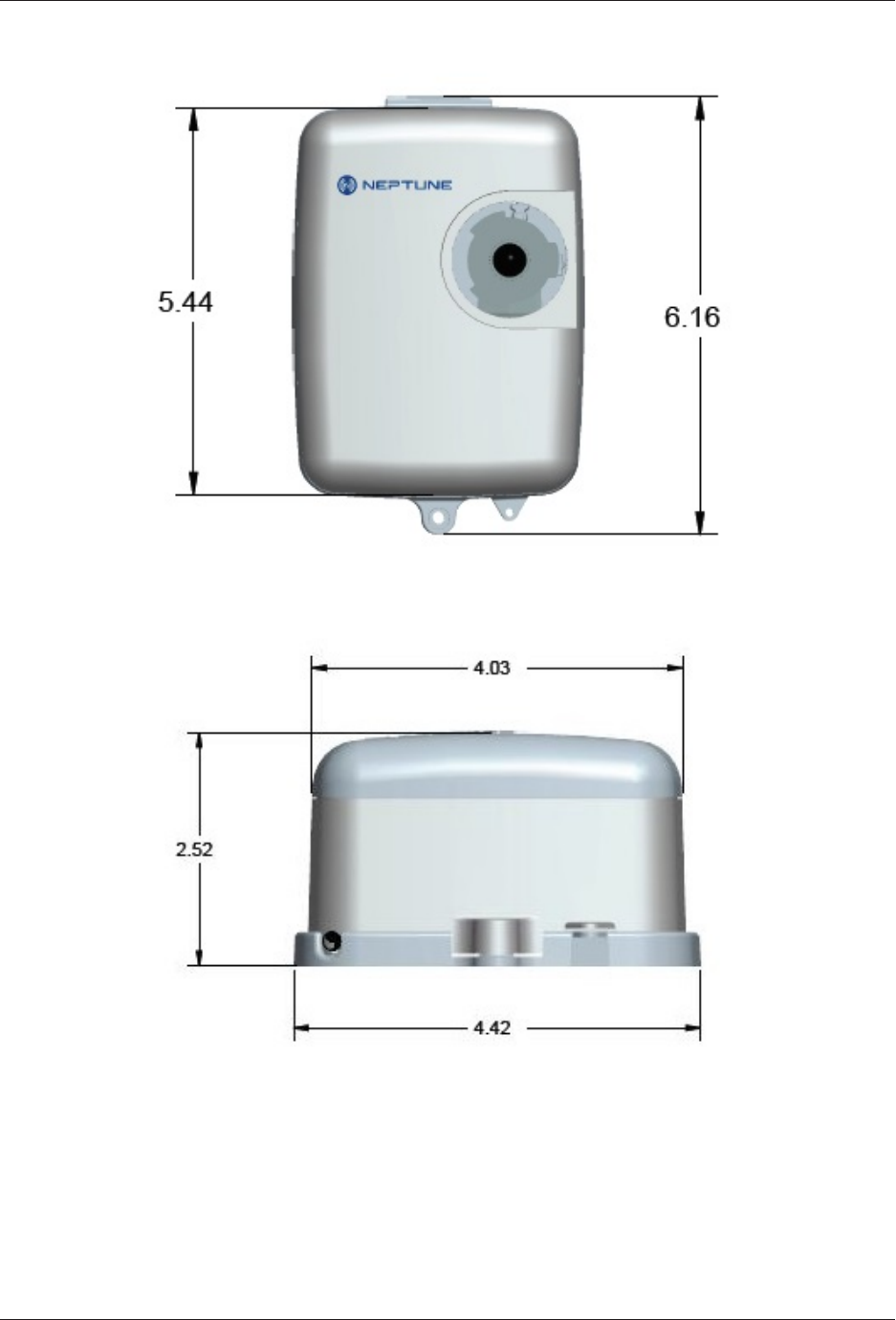
Figure 3 – L900 MIU - Pit Dimensions - Front
Figure 4 – L900 MIU Pit Dimensions - Side
L900 MIU Pit and Wall Installation and Maintenance Guide 5
Chapter 2: L900 Specifications
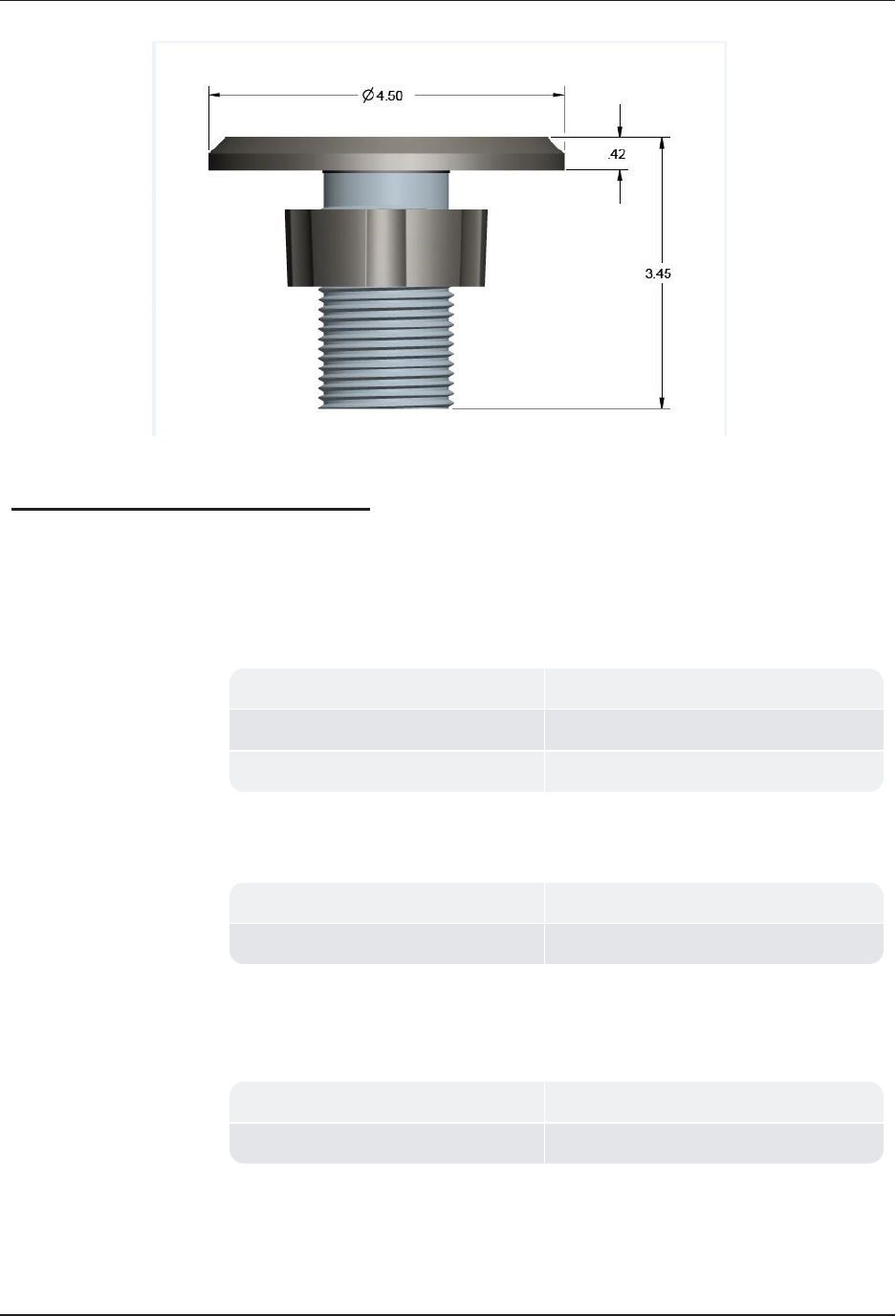
Figure 5 – L900 MIU Pit Antenna
Specifications - L900 MIU Wall
Environmental Conditions
Operating Temperature -22° to 149°F (-30° to 65°C)
Storage Temperature -40° to 158°F (-40° to 70°C)
Operating Humidity 0 to 100% Condensing
Table 5 – L900 MIU Wall Environmental Conditions
Functional Specifications
Register Reading Eight digits
L900 MIU ID Nine digits
Table 6 – L900 MIU Wall Functional Specifications
Dimensions and Weight
Dimensions Refer to Figure 6 and Figure 7
Weight 1.0 lbs. (454 grams)
Table 7 – L900 MIU Wall Dimensions and Weight
6 L900 MIU Pit and Wall Installation and Maintenance Guide
Chapter 2: L900 Specifications
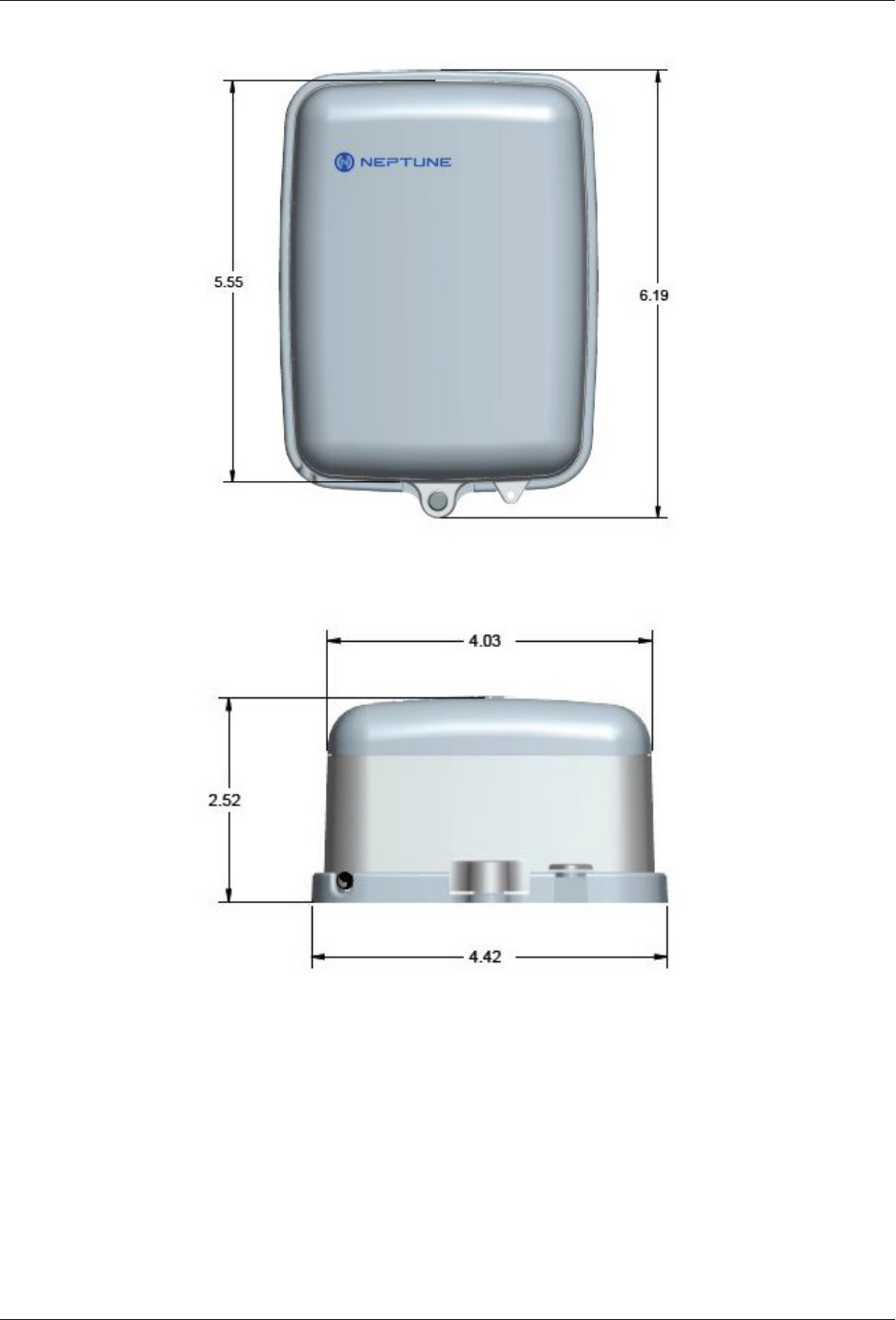
Figure 6 – L900 MIU Wall Dimensions - Front
Figure 7 – L900 MIU Wall Dimensions - Side
L900 MIU Pit and Wall Installation and Maintenance Guide 7
Chapter 2: L900 Specifications

This page intentionally left blank.
Chapter 2: L900 Specifications
8L900 MIU Pit and Wall Installation and Maintenance Guide
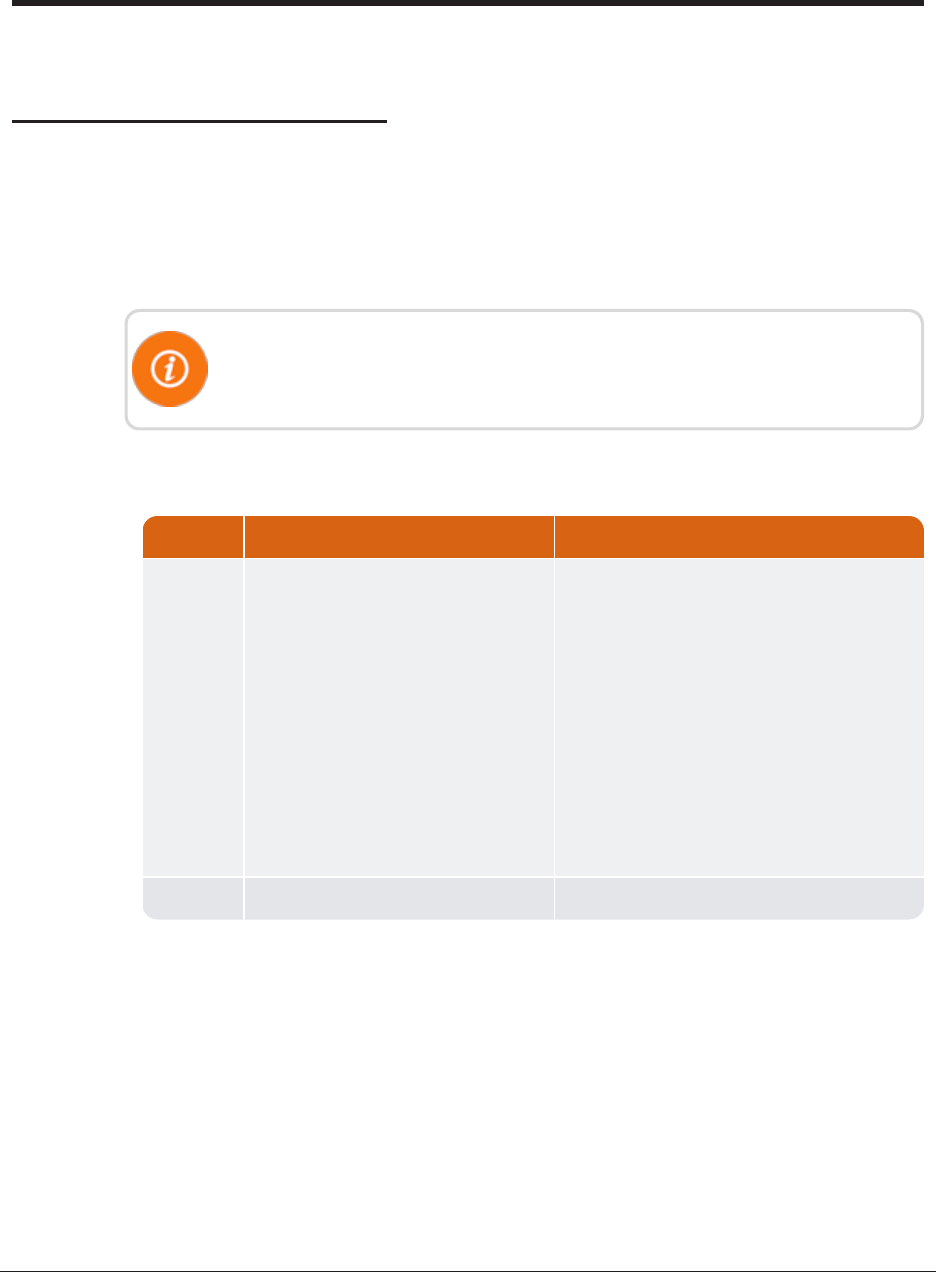
L900 MIU Pit and Wall Installation and Maintenance Guide 9
Chapter 3: General Installation Guidelines
This chapter describes tools, materials, and general installation guidelines for the
L900 MIU.
Tools and Materials
Table 8 below and Table 9 on the next page show the recommended tools and
materials you need to successfully install the L900 MIU.
It is possible that some items do not apply to your specific installation, or the
list does not contain all required tools or materials.
Item Description/Recommendations Use
Took Kit Contains standard tools including:
lAssorted screwdrivers
lNeedle-nose pliers
lWire stripper
lDiagonal cutters
lElectrician's knife
lHammer
lCrimping tool (Part # 5500-158)
Performs various installation procedures.
Magnet 6 lb. force (Part # 12287-001) Magnet swipe the L900 MIU.
Table 8 – Recommended Tools

Item Description/Recommendation Use
Cable Solid 3 Conductor #22 AWG
(black/green/red) Part # 6431-
352
Connect L900 MIU to encoder register.
Moisture Protection
Compound
Novaguard sealant
Part# 96018-072
Cover exposed wires and terminal screws on
register and L900 MIU.
Scotchloks Part# 8138-125 Connect wall L900 MIU or replacement pit
L900 MIU to encoder register.
Site Work Order Documentation provided by your
utility
Receive and record information about the
work site.
Table 9 – Recommended Materials
Safety and Preliminary Checks
Observe the following safety and preliminary checks before and
during each installation.
lVerify that you are at the location specified on the site work
order.
lVerify that the site is safe for you and your equipment.
lNotify the customer of your presence and tell them you need
access to the water meter.
lWrite in the ID number(s) of the L900 MIU you are about to
install, if the site work order does not have an L900 MIU ID
number.
lVerify that the ID number(s) matches the IDnumber(s) on the
L900 MIU you are about to install, if the site work order
already has a L900 MIU ID number.
Verifying/Preparing the Encoder Register
The L900 MIU is designed for use with the following encoder
registers:
lARB V
lProRead
10 L900 MIU Pit and Wall Installation and Maintenance Guide
Chapter 3: General Installation Guidelines

lProRead AutoDetect
lE-CODER
lMACH 10
lCompetitive registers using Sensus which include: Sensus
ECRIII, ICE, iPerl, OMNI, and electronic registers; also
Hersey/Mueller Translator, Badger ADE, and HR ELCD
Before installing an L900 MIU, the encoder register must be
correctly wired and/or programmed to work with the L900 MIU.
E-CODER registers do not require programming.
When a ProRead encoder register is used, the non-
AutoDetect ProRead register must be programmed for three-
wire mode.
If connecting the L900 MIU to a new ProRead encoder register, or
if a three-conductor cable is already connected to a ProRead
encoder register, ensure that the ProRead register is programmed
for three-wire mode using the ProRead programmer and its
RF/L900 MIU 6, 8, or 10 ID TDI format. This can be
accomplished through the ProRead receptacle before it is
removed.
Installation of a Register (Non Pre-Wired or Potted Only)
Before wiring the pit encoder register, consider the following.
1. Make sure the cable is long enough. When the installation is
complete, the pit lid can be removed easily without straining
the cable.
2. Use only 22 AWG cable to make the connection from the
encoder register to the L900 MIU.
3. Remove the terminal screw from the encoder register.
4. Strip ¾-inch insulation from the cable jacket, leaving only the
three insulated wires.
5. Take precautions not to nick or cut the insulation on the three
wires, strip off ½-inch of insulation from each of the three
wires.
L900 MIU Pit and Wall Installation and Maintenance Guide 11
Chapter 3: General Installation Guidelines
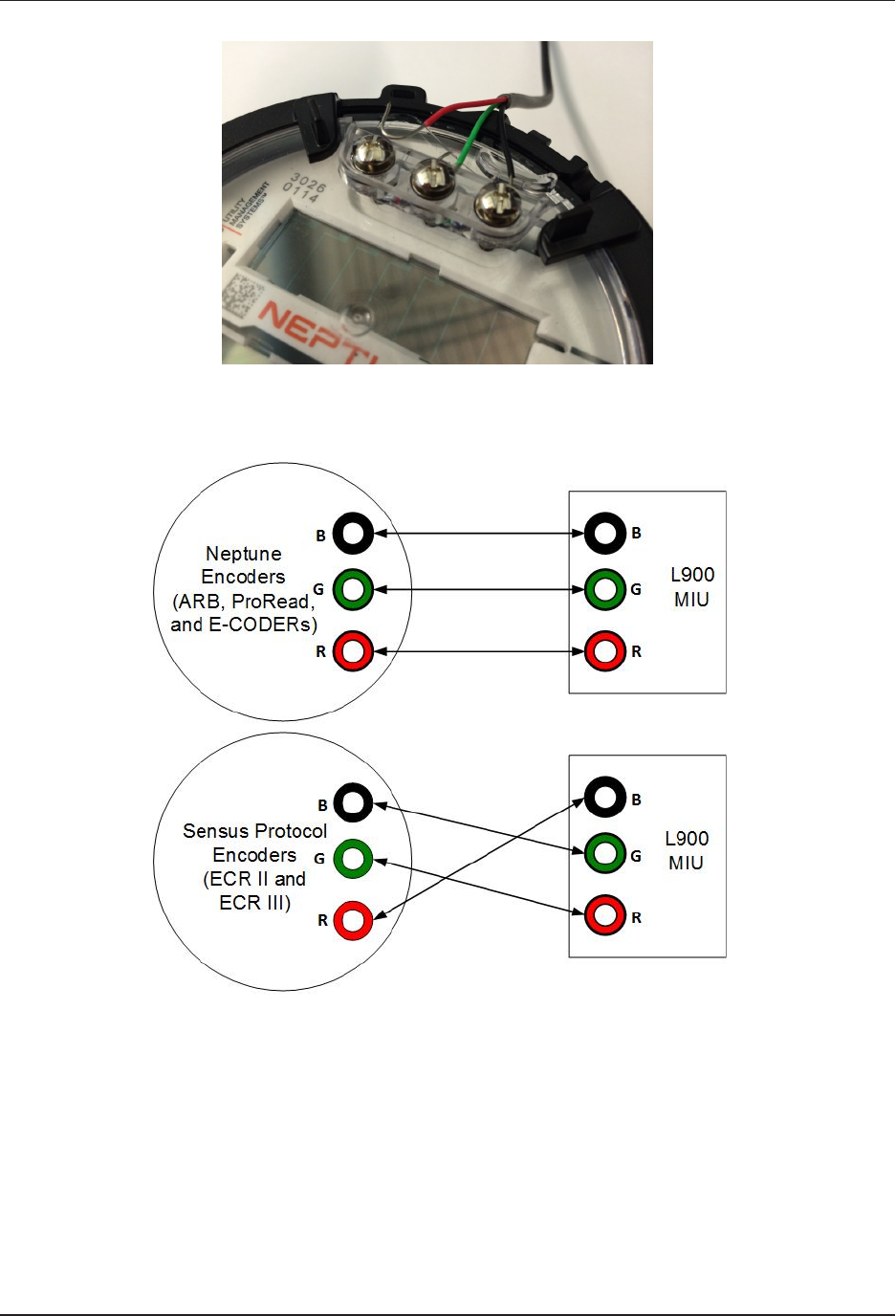
Figure 8 – Wiring a Neptune Encoder Register
Figure 9 – L900 MIU Color Code for Wires
6. If required, connect the three conductor wires to the encoder
register's terminal per the manufacturer's instructions. See
Figure 8 and Figure 9.
12 L900 MIU Pit and Wall Installation and Maintenance Guide
Chapter 3: General Installation Guidelines
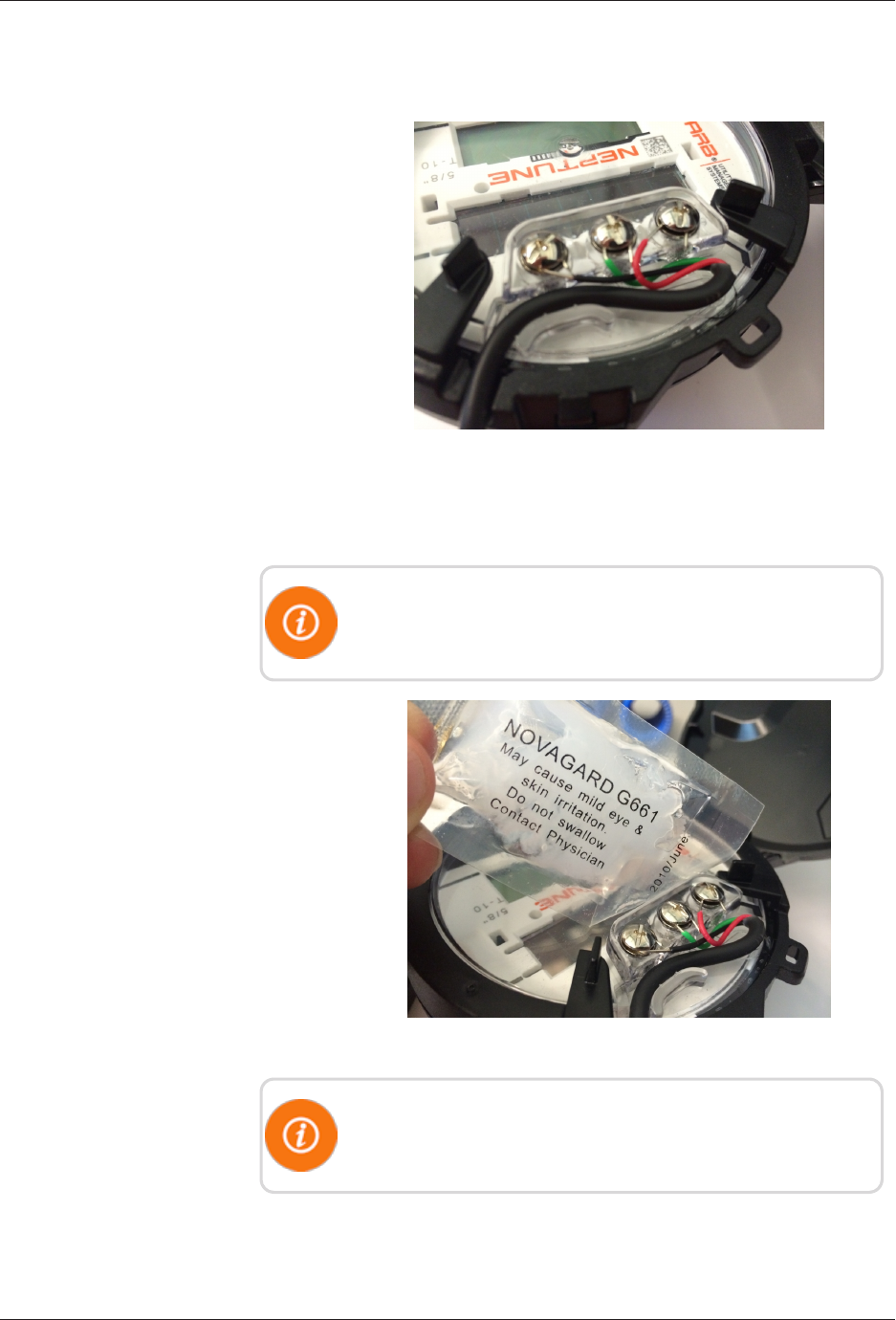
7. Thread the cable around the strain relief posts of the encoder.
See Figure 10.
Figure 10 – Cable Threaded Around Strain Relief Posts
8. Apply sealant liberally and ensure that it encapsulates the
terminal screws and exposed wires. See Figure 11.
Neptune requires Novaguard G661 sealant or Dow Corning
compound 4.
Figure 11 – Application of the Sealant
Any leak point can cause a reading failure in a submerged
meter setting.
L900 MIU Pit and Wall Installation and Maintenance Guide 13
Chapter 3: General Installation Guidelines
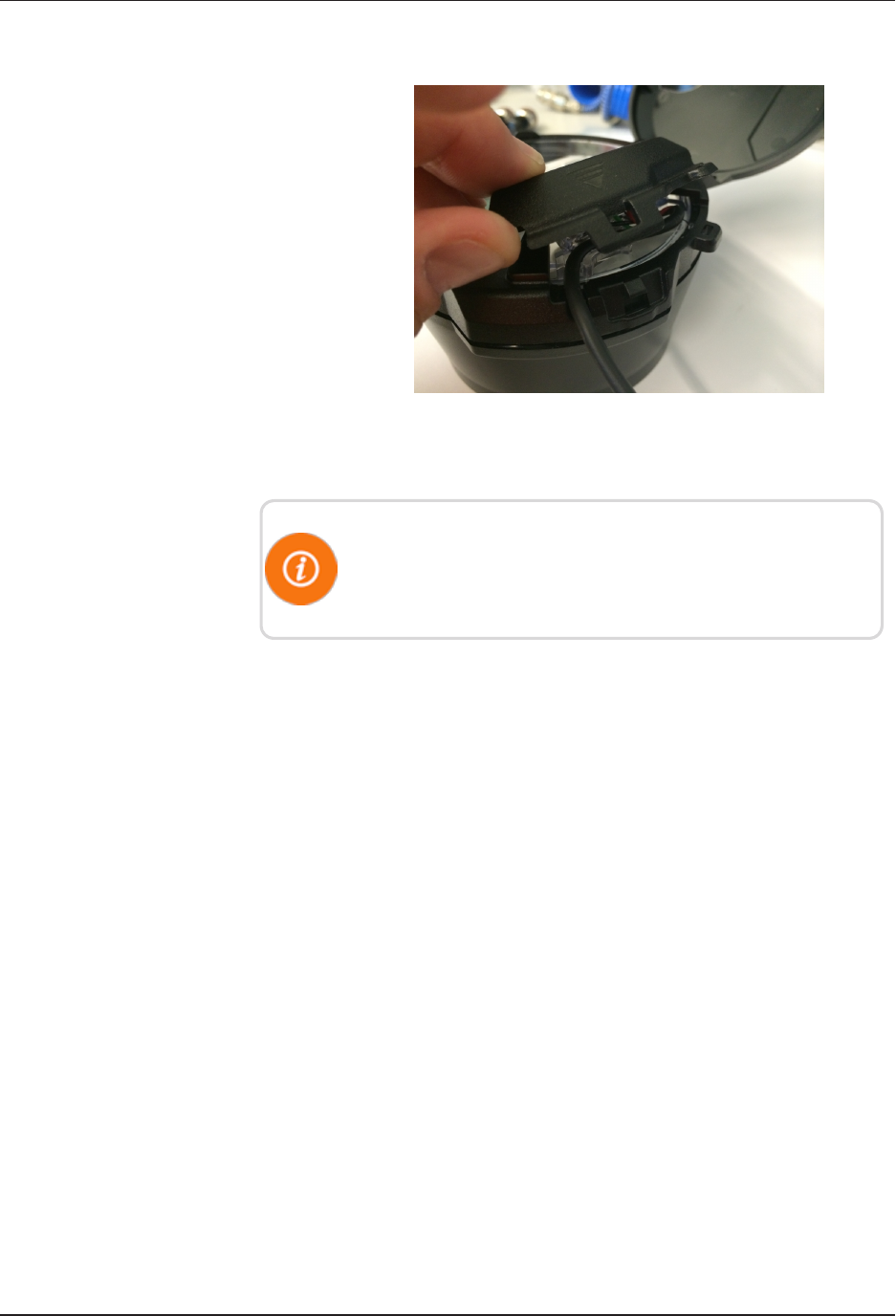
9. Snap the cover onto the encoder register. See Figure 12 below.
Figure 12 – Covering the Terminal Screws
10. Run the cable to the L900 MIUand fasten it securely.
Do not exceed maximum cable lengths as defined in Table 1
on page 4. If the encoder register is prewired and potted, use
Scotchloks for connecting the register to the L900 MIU.
14 L900 MIU Pit and Wall Installation and Maintenance Guide
Chapter 3: General Installation Guidelines
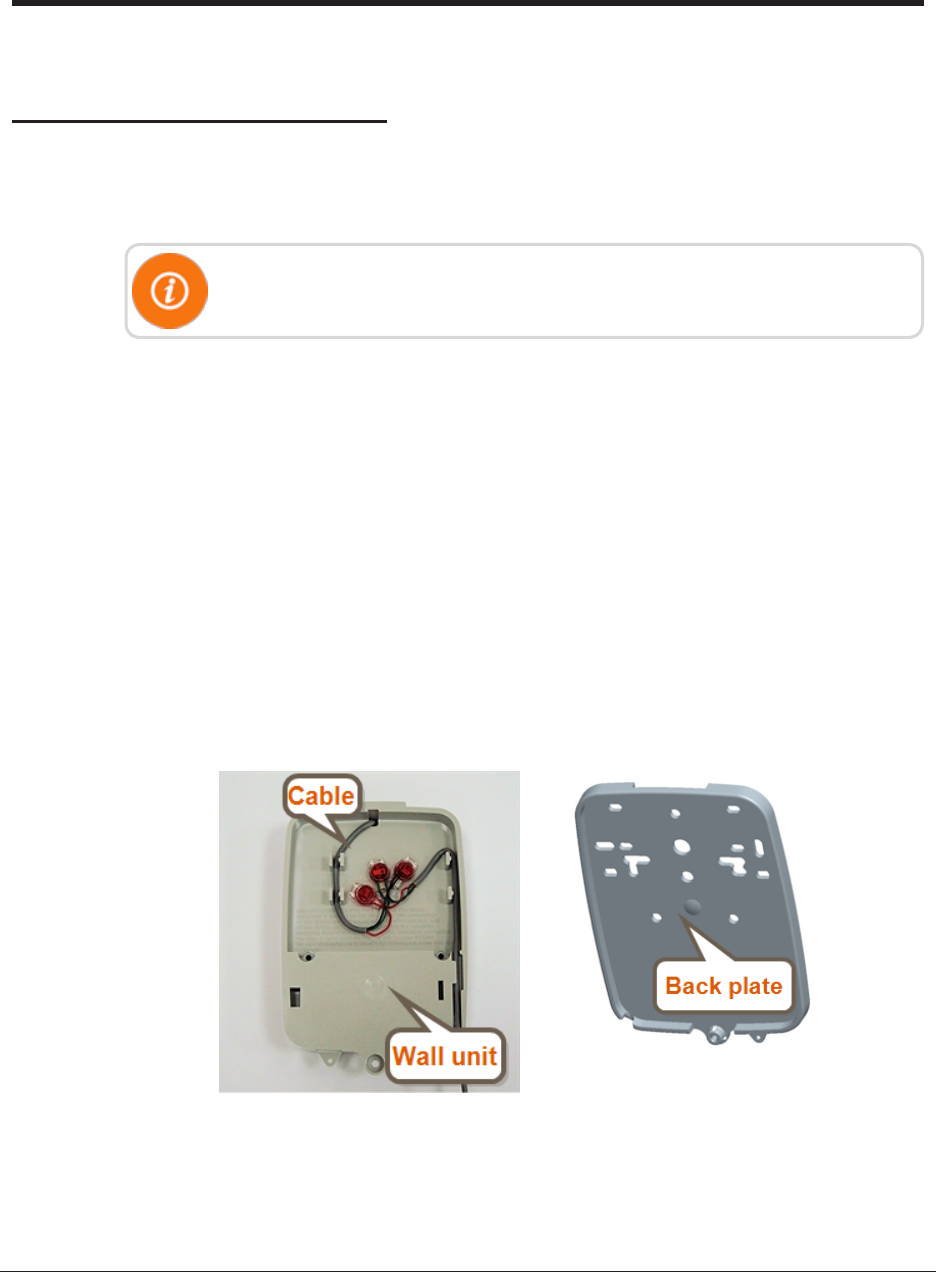
L900 MIU Pit and Wall Installation and Maintenance Guide 15
Chapter 4: Wall Installation
This chapter describes storage and unpacking instructions, preliminary tests, tools,
materials, site selection, and wall installation of the L900 MIU.
Prior to Installation
Any existing network registers must be reprogrammed.
The L900 MIU is not capable of being networked.
Storage
After receipt, inspect shipping containers and contents for damage prior to storage.
After the inspection is complete, store the cartons in a clean, dry environment.
Keep in mind that the L900 MIU has an internal battery. Storage for more than one
year can affect product life. Be sure to use a first-in first-out inventory control
system. See "Environmental Conditions" on page4.
Unpacking
As with all precision electronic instruments, the L900 MIU should be handled
carefully; however, no additional special handling is required.
After unpacking the L900 MIU, inspect for damage. If the L900 MIU appears to be
damaged or proves to be defective upon installation, notify your Neptune sales
representative. If one or more items requires reshipment, use the original cardboard
box and packing material.
Figure 13 – L900 MIU Wall Kit

Tools and Materials
Table 8 on page 9 and Table 9 on page 10 show the
recommended tools and materials you need to successfully install
the L900 MIU.
It is possible that some items do not apply to your specific
installation or the list does not contain all required tools or
materials.
Site Selection
Always follow your company's safety practices and
installation guidelines when installing an L900 MIU. Never
perform an installation during a lightening storm or under
excessively wet conditions.
Installation and operation in moderate temperatures increase
reliability and product life. See "Functional Specifications" on
page6.
Follow these guidelines when selecting a location to install the
L900 MIU.
lFor best results, Neptune recommends mounting the L900 MIU
on the outside of the building and in a location that provides a
direct line-of-sight to the path of the meter reading device.
lFor best results, Neptune recommends the L900 MIU be
installed approximately five feet above the ground.
lThe L900 MIU must be installed in a vertical and upright
position.
lThe preferred mounting surface for the L900 MIU is a flat wall,
but it can also be mounted to a pipe.
lThe selected location should be clear of all obstructions.
lFor best results, avoid installing the L900 MIU behind metal
fences or walls.
Refer toTable 10 on page 17 for maximum cable lengths.
16 L900 MIU Pit and Wall Installation and Maintenance Guide
Chapter 4: Wall Installation
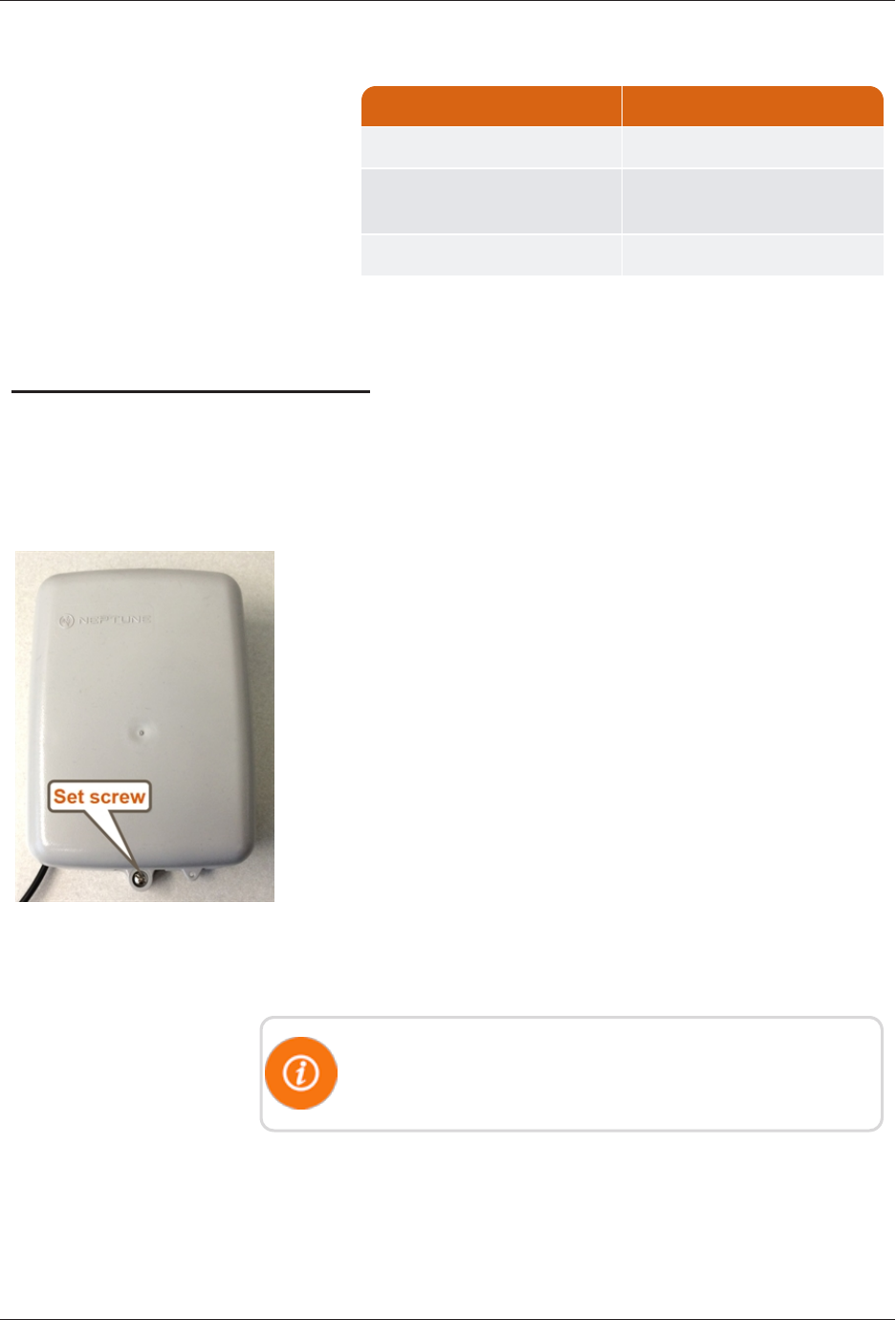
Encoder Register Maximum Cable Lengths
Neptune ARB V* 300 feet (91 meters)
Neptune ProRead/
E-CODER
500 feet (152 meters)
Sensus Protocol registers 200 feet (61 meters)
*Meets manufacturer's published specification for wire length between
encoder.
Table 10 – Maximum Cable Lengths
Installing the L900 MIU
Remove the Main Housing
Complete the following steps to install the wall L900 MIU.
Figure 14 – L900 MIU Wall Main
Housing
1. Remove the main housing from the mounting adapter. See
Figure 14.
The Hi-Lo fastener for securing the main L900 MIU housing to
the adapter plate is shipped separately.
L900 MIU Pit and Wall Installation and Maintenance Guide 17
Chapter 4: Wall Installation
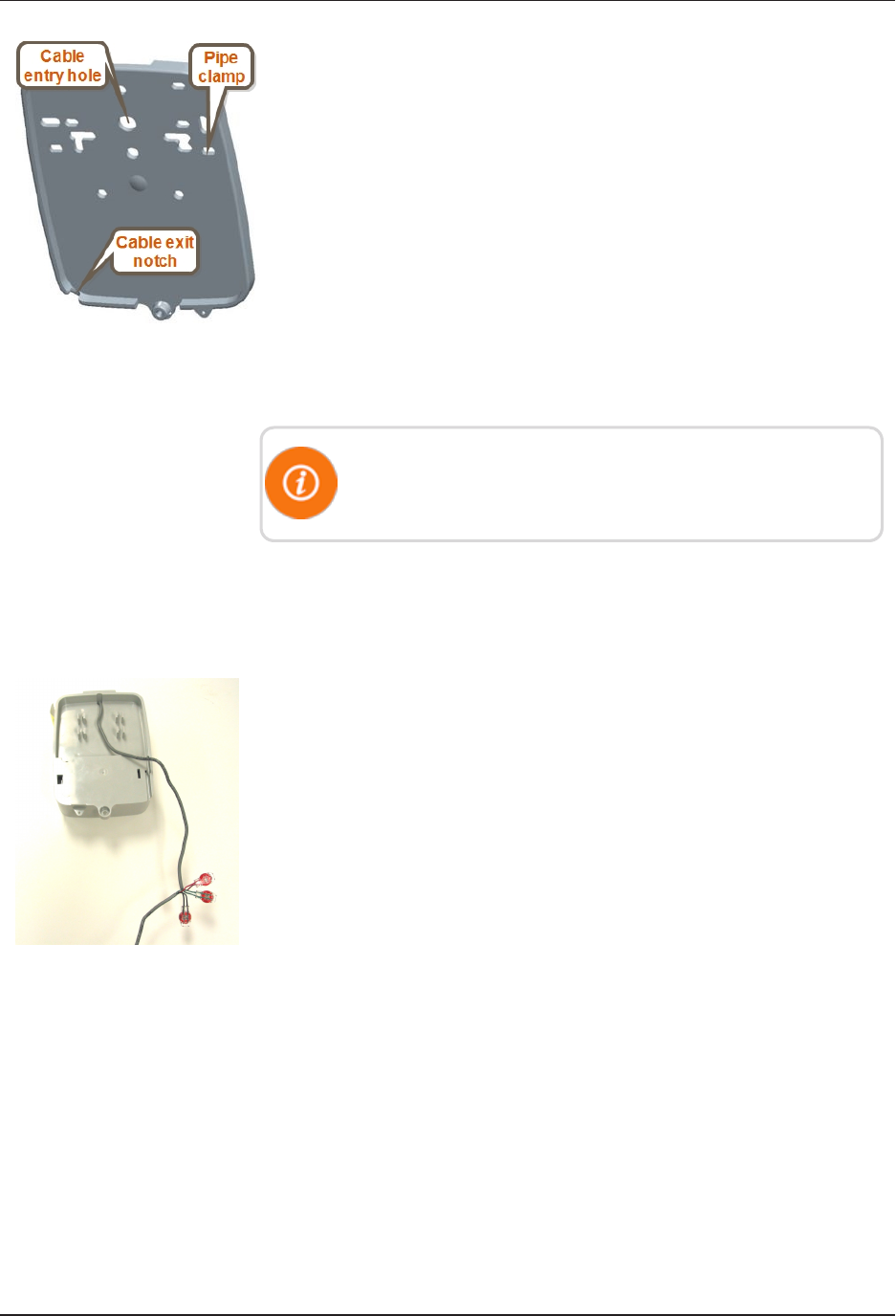
Figure 15 – Mounting Adapter
2. Study Figure 15 and the location requirements, and then
decide how to install the L900 MIU.
lThe cable enters through the cable entry hole in the back of
the mounting adapter.
lWhen the L900 MIU replaces a receptacle, use the
appropriate holes to allow reuse of the receptacle's original
mounting holes. See Figure 15.
lWhen mounting the L900 MIU to a pipe, use the pipe clamp
holes to secure the mounting adapter to a pipe.
A variety of holes in the mounting adapter allows for a quick
and easy installation.
Applying the Scotchloks
To apply the Scotchloks, complete the following steps.
Figure 16 – Gel Cap Connections
1. Using Scotchloks gel caps, connect the register to the
pigtail from the L900 MIU. See Figure 16.
18 L900 MIU Pit and Wall Installation and Maintenance Guide
Chapter 4: Wall Installation
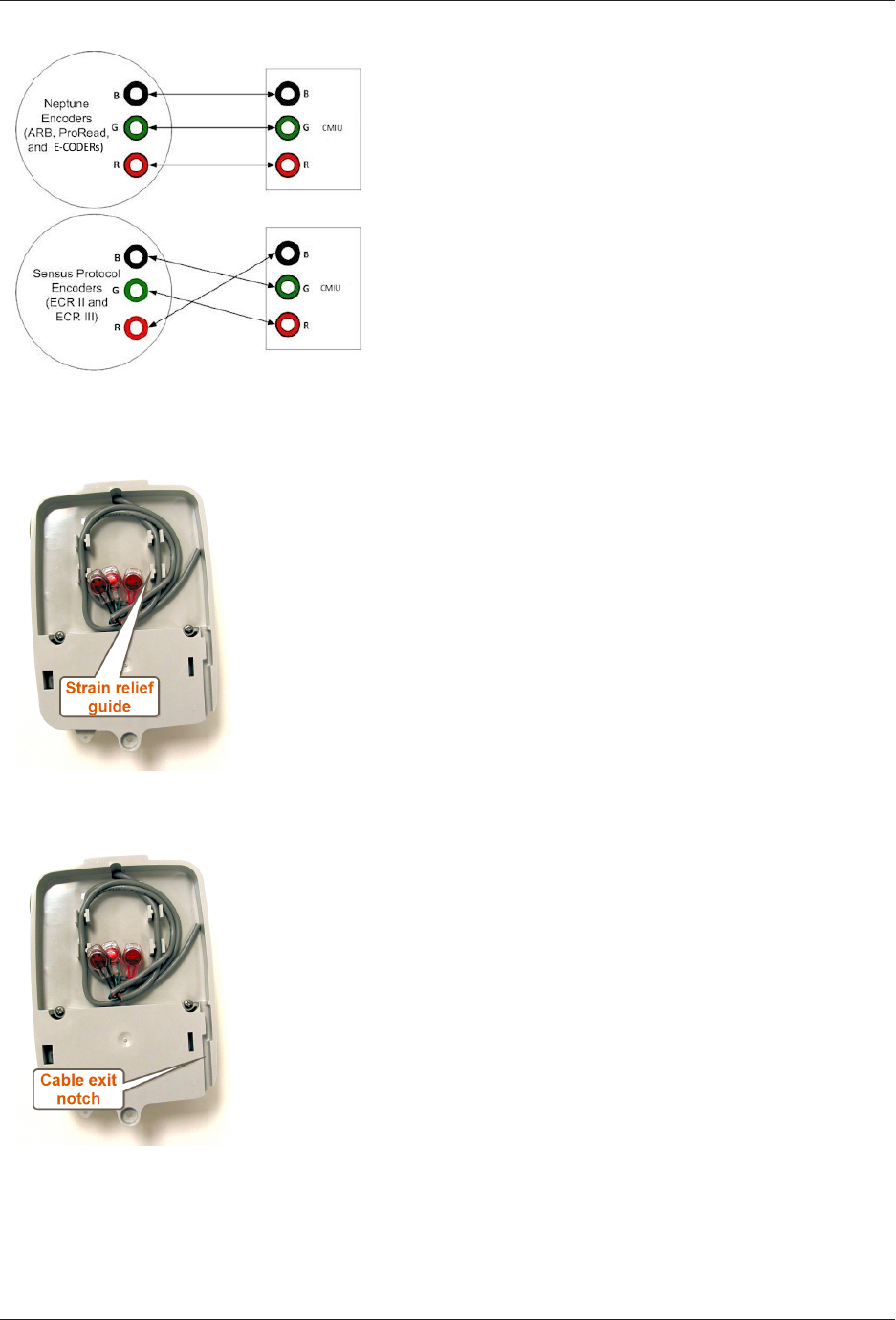
Figure 17 – Color Code for Wires
2. Pair the wires according to the color diagram. See
Figure 17.
Figure 18 – Adapter Cable
3. Slide the paired wires into the grooves provided until
they seat into the back of the gel cap.
4. Squeeze the gel cap firmly using the appropriate
crimping tool to ensure a good connection.
5. Repeat this process until all connections are complete.
6. Store excess wire and Scotchloks in the hollow cavity
in the back of the L900 MIU using the strain relief
guides as shown in Figure 18.
Figure 19 – Cable Exit Notch
7. Continue to guide the remaining wire through the cable
exit notch at the bottom right side of the L900 MIU as
shown in Figure 19.
L900 MIU Pit and Wall Installation and Maintenance Guide 19
Chapter 4: Wall Installation
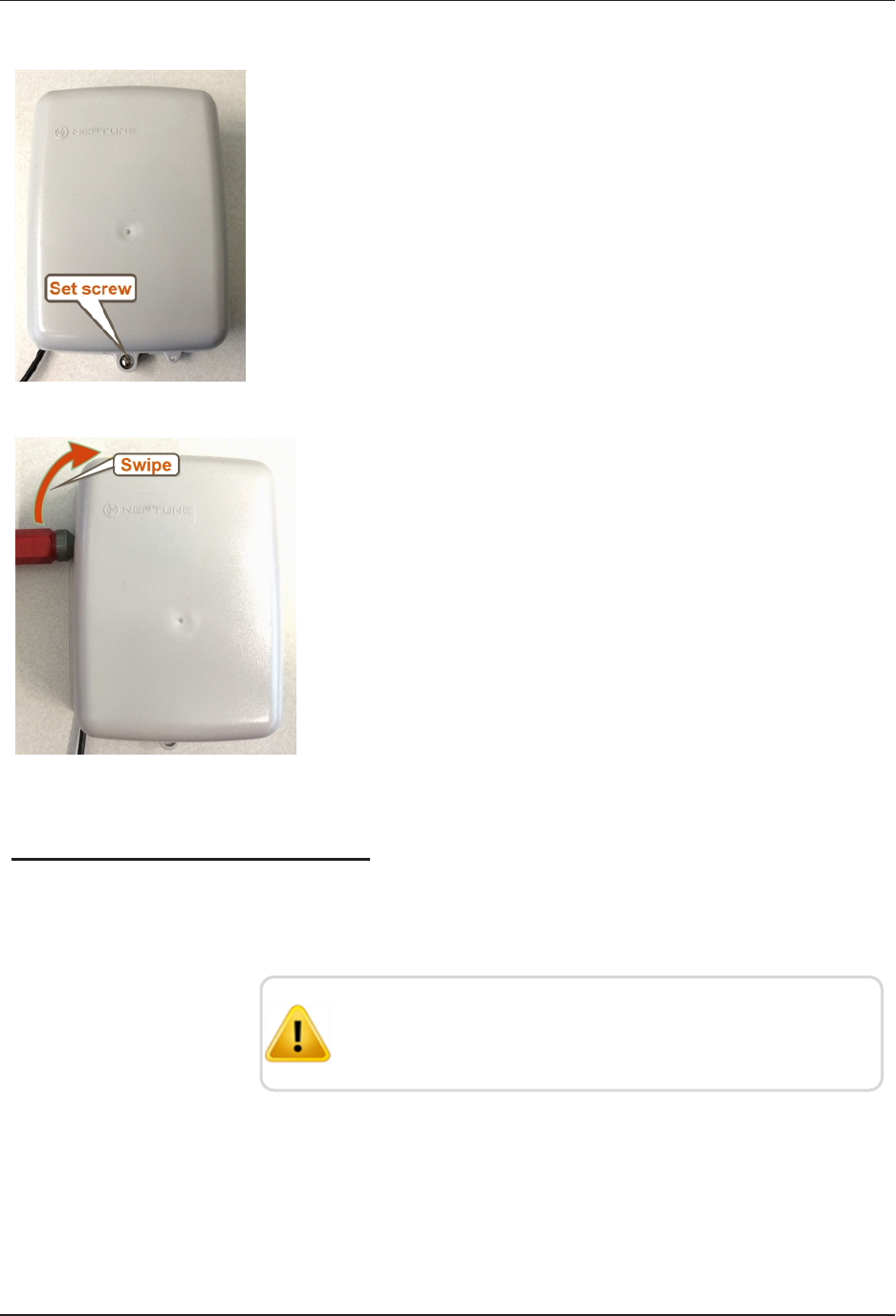
Magnet Swiping and Completing the Installation
Figure 20 – Securing Adapter
1. Slide the tongue on the top of the L900 MIU into the
groove on the top of the mounting adapter.
2. Secure the L900 MIU to the mounting adapter using the set
screw. See Figure 20.
Figure 21 – Magnet Swipe the
L900 MIU
3. Position the magnet against the left side of the L900 MIU
directly in line with the Neptune logo.
4. Move the magnet up and over the top left corner of the
L900 MIU. See Figure 21.
Testing the Installation
To test the installation, complete the following steps.
To avoid RF signal saturation of the HHU, position yourself at
least two to three feet from the L900 MIU.
1. Power up the HHU test device and start the testing programs
provided.
20 L900 MIU Pit and Wall Installation and Maintenance Guide
Chapter 4: Wall Installation
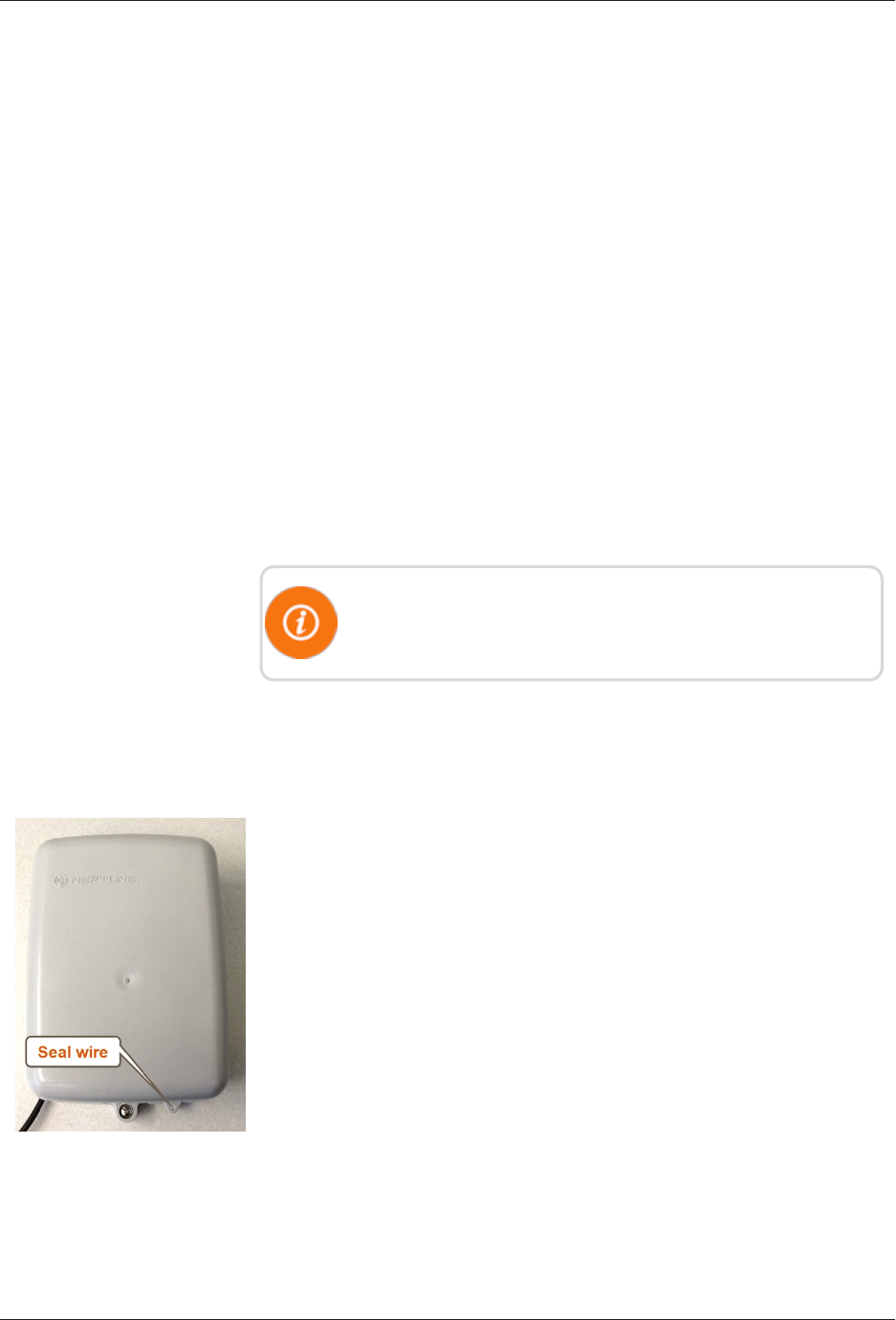
2. When the L900 MIU is installed correctly, its ID number(s)
and meter reading(s) appear on the display of the HHU. Verify
the correct meter reading(s) by comparing it to the meter’s dial.
If the reading(s) is the same, proceed to the next section.
3. If a meter reading does not appear on the HHU display, or the
meter reading in the HHU display is not the same as the
reading on the meter’s dial:
lMagnet swipe the L900 MIU using the magnet.
lVerify all electrical connections.
lTest the installation again.
4. If a ProRead encoder register is used:
lEnsure the unit is programmed in three-wire mode.
lVerify all electrical connections.
lMagnet swipe the L900 MIU. (See Step 1.)
If a problem still exists, contact your Neptune Sales
Representative.
Completing the Installation
To complete the installation, follow these steps.
Figure 22 – Install Seal Wire
1. To complete the installation, install a seal wire or seal
clip through the seal holes at the bottom of the main
housing. See Figure 22.
2. Verify that the requirements of the site work order have
been met and that you have recorded all information.
3. Clean up the installation site before leaving.
L900 MIU Pit and Wall Installation and Maintenance Guide 21
Chapter 4: Wall Installation